We’ve previously looked at how leaded glass windows compare to plain windows.
In this blog, we look at the history of leaded glass windows, their enduring popularity, and why you should consider investing in modern leaded glass windows for your home.
Benefits of Modern Leaded Glass Windows
There are many benefits of contemporary leaded glass windows, including:
- Beautiful, decorative designs
- Bespoke windows available
- Authentic look for curb appeal
- Energy efficiency with airtight seals
- Effective ventilation for superior air quality
- Security with Ultion barrels and other locking systems available
- Glazing options include double and triple glazing
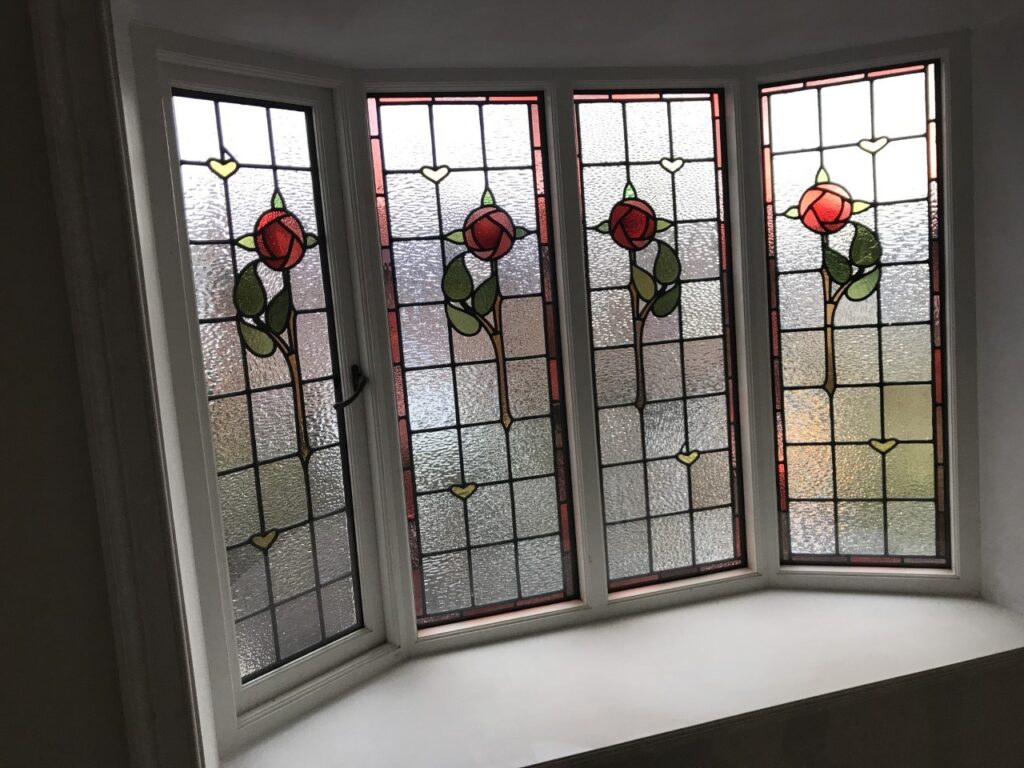
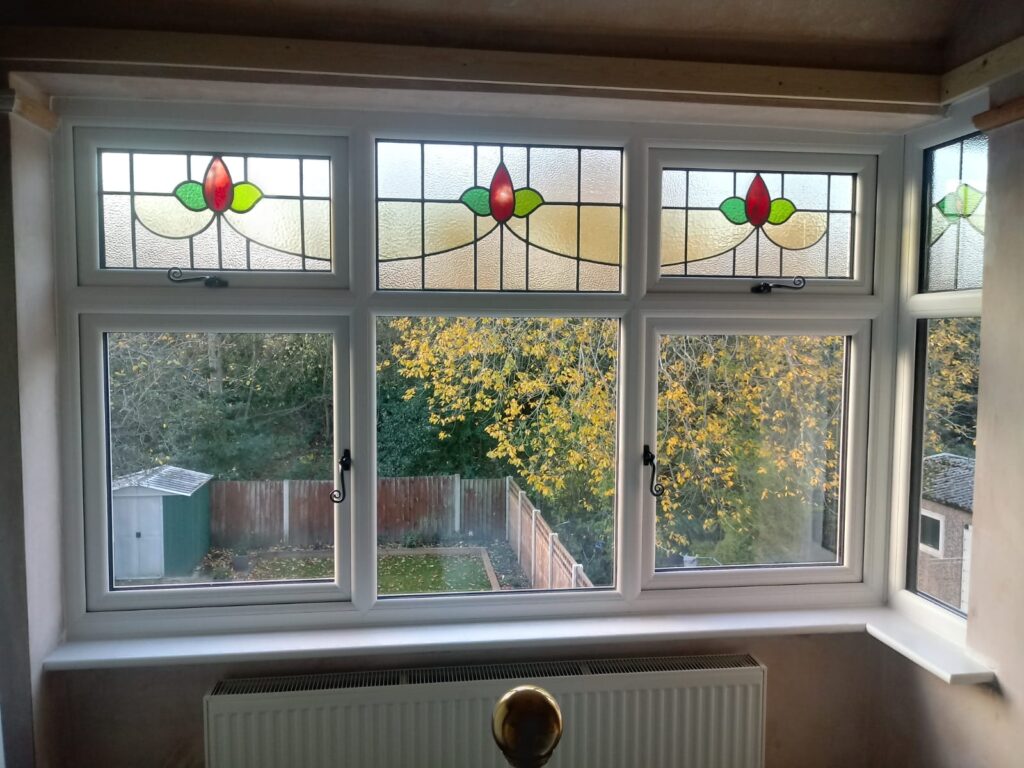
What are the different types of leaded windows?
There are a few different types of leaded glass windows, here’s a quick rundown.
uPVC Leaded Glass Windows
uPVC windows with leaded glass may seem like an odd fit, but it’s a perfect blend of traditional style and modern engineering.
A uPVC window is secure and energy-efficient and requires little to no maintenance. A basic clean with warm soapy water and a soft cloth is all you need. uPVC is durable and weather-resistant, so you don’t need to worry about water damage or warping over time.
The frames can be sprayed with the colour of your choice, including wood-effects that don’t look out of place in period properties.
At Manchester Window Factory, we offer a bespoke service where you can create or replicate any leaded glass design. This enables you to retain the original design while benefiting from modern technology. You can also create a unique design that perfectly fits your decor and architecture.
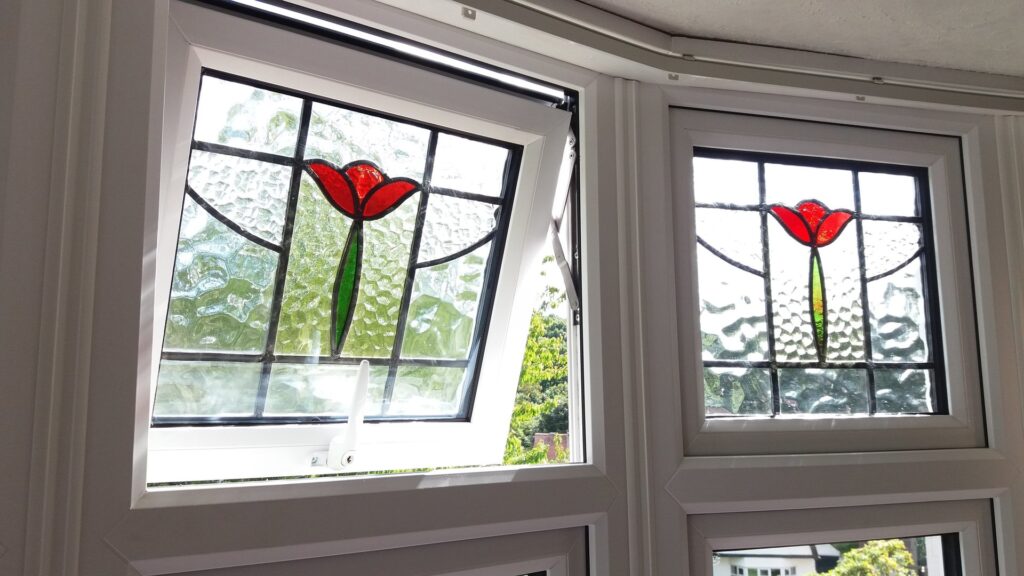
Double glazing windows
All of our high-quality modern leaded glass windows are available with double or triple-glazing to ensure proper insulation. Both glazing options also have noise-reducing properties.
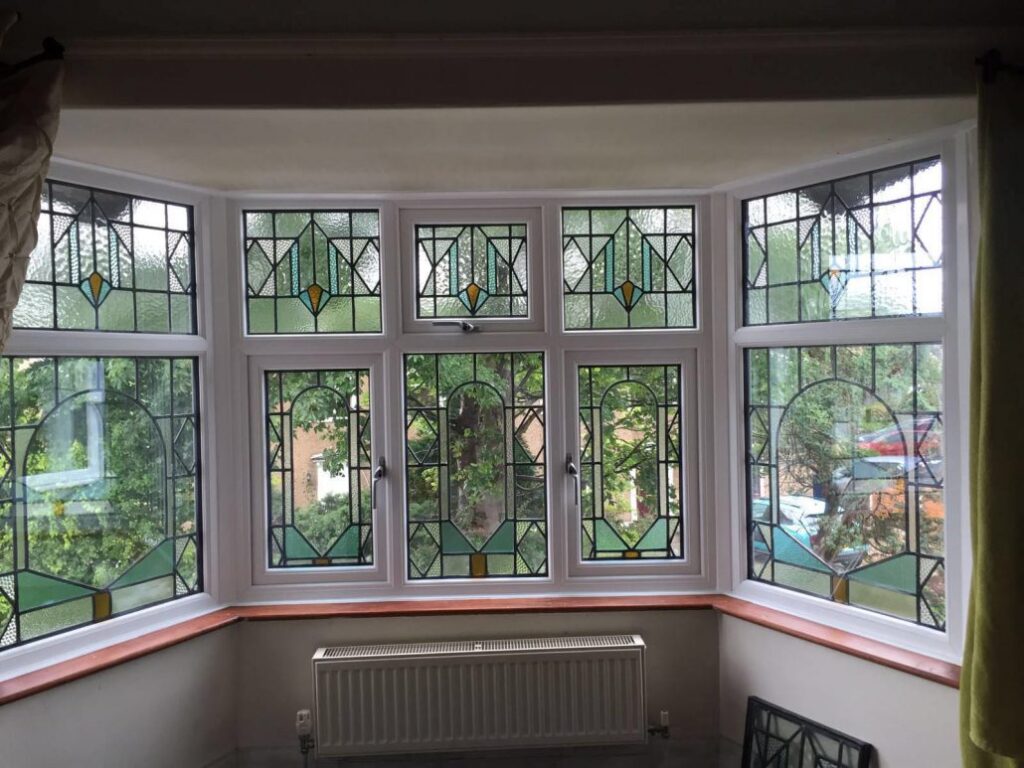
Traditional glass windows
If you have purchased a period home, you may have inherited some traditional leaded glass windows. They may even have been what attracted you to the property.
Leaded glass windows have an undeniable charm and can restore character to a period property.
However, traditional glass windows are usually single-glazed, offering little protection against the elements and enabling draughts. Single-glazed windows are being phased out in the UK as they are not energy-efficient and contribute to the country’s carbon footprint by allowing heat and greenhouse gases to escape.

Contemporary glass windows
Contemporary leaded glass windows are designed to rectify the problems associated with traditional glass windows while retaining their appeal.
Modern windows are double or triple-glazed, energy-efficient, secure, and low maintenance. They are built to last and fit a modern lifestyle, with noise-reducing properties and better heat retention.
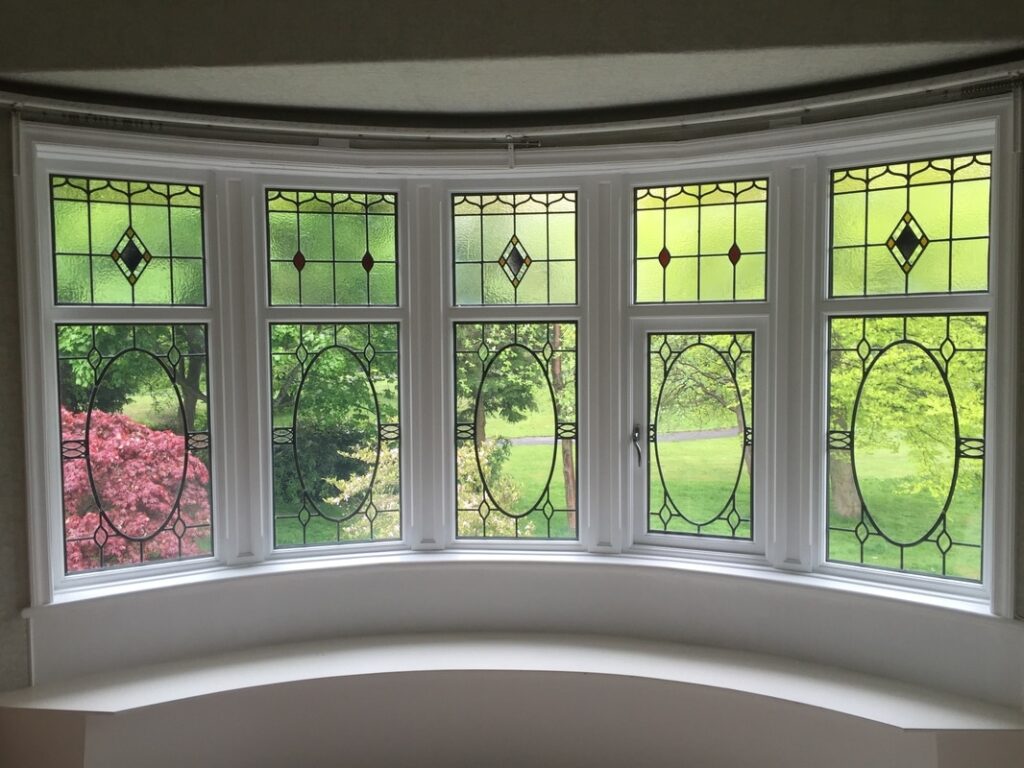
Stained glass windows
Although the terms stained glass and leaded glass are often used interchangeably, stained glass is a type of leaded glass featuring colour segments.
These segments create a pattern or depict a scene, such as in churches.
You can have leaded glass windows that are also stained glass windows, but not every leaded glass window is stained.
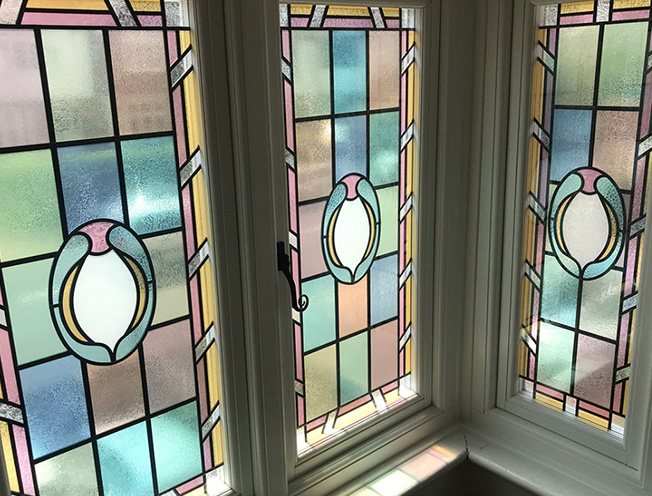
The History and Evolution of Leaded Glass Windows
It is generally agreed that stained glass windows originated in ancient Rome, where they decorated churches and perhaps the homes of nobles. There are examples as early as the 4th century.
In Europe, leaded glass windows reached peak popularity around 1150-1500, with majestic stained glass windows commissioned for churches and cathedrals.
A book by a 12th-century monk and metalworker named Theophilus, On Diverse Arts, describes how such wonders were created.
The first official use of stained leaded glass windows is St Peter’s monastery in 675 AD when a French import was used.
Gothic
One of the most important times for stained glass was the Gothic period, during the Middle Ages. Windows featured heavy iron frames which could obscure the designs. As the architecture evolved, we saw the introduction of the perpendicular style (late 14th century – early 16th century), where the lines ran vertically, and huge windows were made possible by pointed arches and flying buttresses. Artists used such wide expanses of glass as a blank canvas, creating stunning friezes.
Art Deco
During the 1920s/1930s, more homes began to embrace stained glass, with Edwardian designs and picture windows becoming simpler and more graphic.
Windows during this time featured strong shapes and colours, such as sunbursts in brilliant reds and oranges and geometric patterns. Sometimes, no colour was used, with varying degrees of obscurity creating the pattern or image. This technique is still used today.
Famous Examples and Landmarks
There are many examples of magnificent stained glass windows in landmarks and famous buildings around the world.
Augsburg Cathedral, late 11th Century
One of the oldest stained glass windows still in situ today can be seen in a church in Augsburg, Germany. Dating back to the late 11th century, the glass depicts biblical figures, including Daniel and Moses, in rich jewel tones. The figures are surrounded by marble borders and look down on the congregation from the south clerestory.
Sainte-Chapelle, mid-13th Century
One of the greatest depictions of biblical scenes through stained glass is in the Sainte-Chapelle in Paris. 15 long narrow windows illustrate scenes from the Old and New Testaments, plus the bringing of holy relics to the city by King Louis IX, now known as Saint Louis.
York Minister, 15th Century
One of the largest collections of stained glass in England resides in York Minister. Some windows date back to the 12th century, with the Great East Window by John Thornton depicting scenes from the Book of Revelation.
Vence Chapel, 1949-51
In a small Dominican chapel, you can find three sets of vibrant stained glass windows by Henri Matisse. Bold floral designs in sunshine yellow, sea blue, and lush green, cast a warm glow on visitors while evoking the south of France.
Nasir Al-Mulk Mosque, 19th Century
Holy buildings of all denominations have long incorporated stained glass, but few do it better than the breathtaking “Pink Mosque” in Shiraz, Iran. The colourful stained glass windows reflect the early morning sun bathing the mosque’s Persian carpets and rose-hued tiles in rainbows.
Grossmünster Zürich, 2006–2009
Built in the 11th Century, Zurich’s Grossmunster is a Protestant church that lost much of its splendour during the Reformation. New stained glass windows were added in the late 20th and early 21st century. While many depict biblical scenes, the pop art pieces by Sigmar Polke really catch the eye.
You can find many more examples of famous stained glass windows when you travel, and perhaps take inspiration for your own designs, albeit on a less grand scale!
Get a Quote
We supply and install attractive, energy-efficient leaded glass windows in Manchester and the surrounding areas.
We don’t believe in hidden costs or vague pricing, it’s not our style.
That’s why we’ll give you a free, no-obligation quote upfront. Simply fill in the online quotation form on our Contact Us page, email us at [email protected] or call us at 0161 976 4739 to request a callback.
You can also check the opening times of our Altrincham showroom and pop in if you prefer to do business face-to-face.




